Date of Incident
Location
Publication Date
Updated
Commissioned By
Additional Funding
Collaborators
Methodologies
Forums
On 17 October 2023, a devastating explosion took place in the courtyard of al-Ahli Hospital in Gaza City. According to the Gaza Health Ministry, 471 people were killed and 342 injured.
In the hours after the explosion, doctors who treated the wounded held a news conference at nearby al-Shifa Hospital, among the bodies of some of those killed in the blast.
There, the British-Palestinian surgeon Dr Ghassan Abu-Sittah spoke, flanked by colleagues. ‘This is a massacre’, said Dr Abu-Sittah, before predicting that ‘more hospitals will be targeted’.
Later, Dr Abu-Sittah would tell us that the blast at al-Ahli Hospital was the moment when it seemed clear to him that Israel’s military campaign ‘stopped being a war, and became a genocide’.
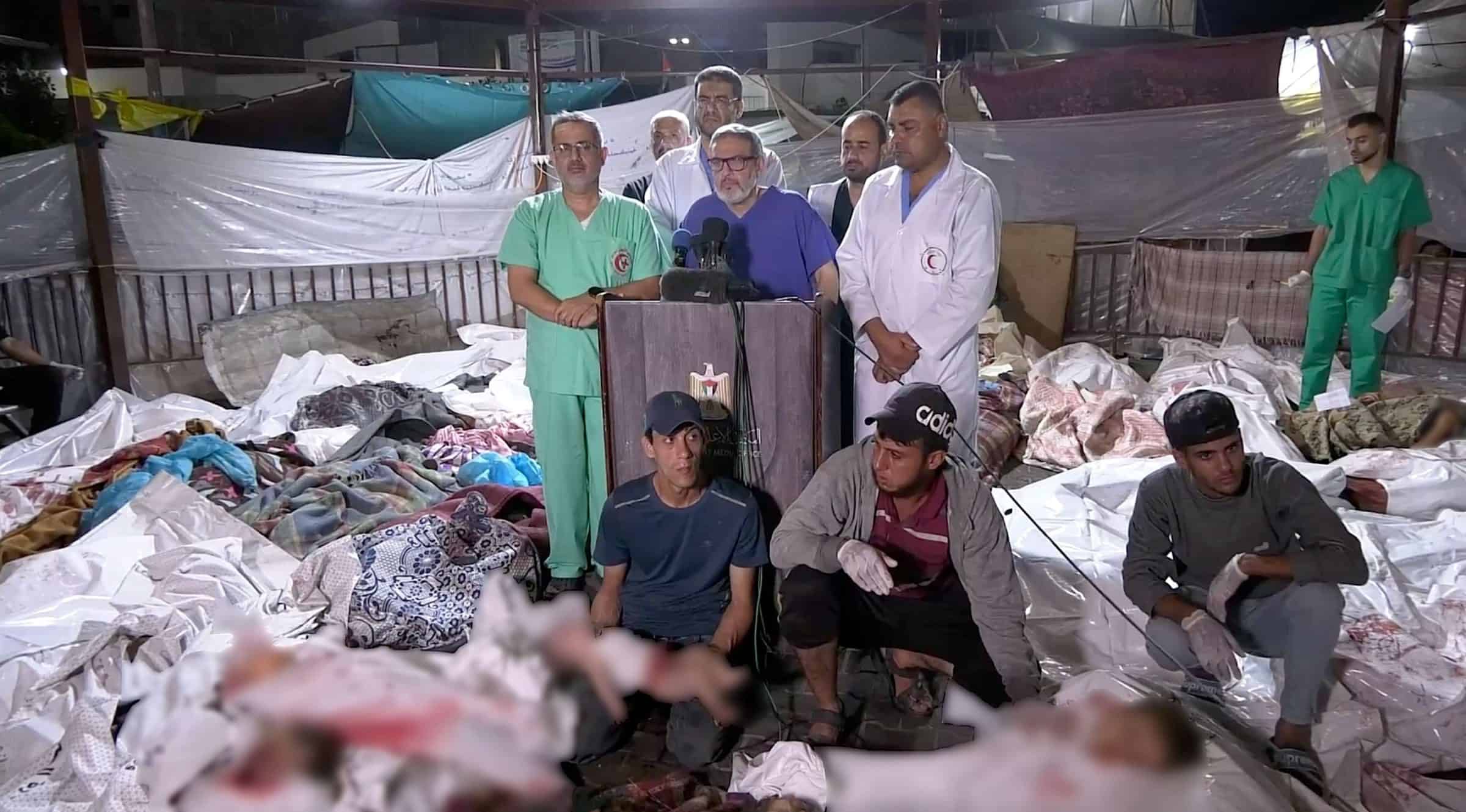
Dr Abu-Sittah arrived in Gaza on 9 October 2023 to volunteer with Médecins Sans Frontières (MSF). He remained in Gaza for 43 days, working at al-Ahli, al-Shifa, al-Awda hospitals. Following his return to the UK, he was elected to the position of Rector of the University of Glasgow, from which position he continued to advocate against the ongoing genocide.
In April 2024, FA met with Dr Abu-Sittah to reconstruct the events of the night of 17 October 2023 as he had experienced them. Using an interview practice called ‘situated testimony’, we worked with Dr Abu-Sittah to retrace his steps through a 3D reconstruction of the hospital compound, in which we had geolocated and ‘photomatched’ visual evidence recorded by survivors of the blast, including Dr Abu-Sittah himself, and journalists.
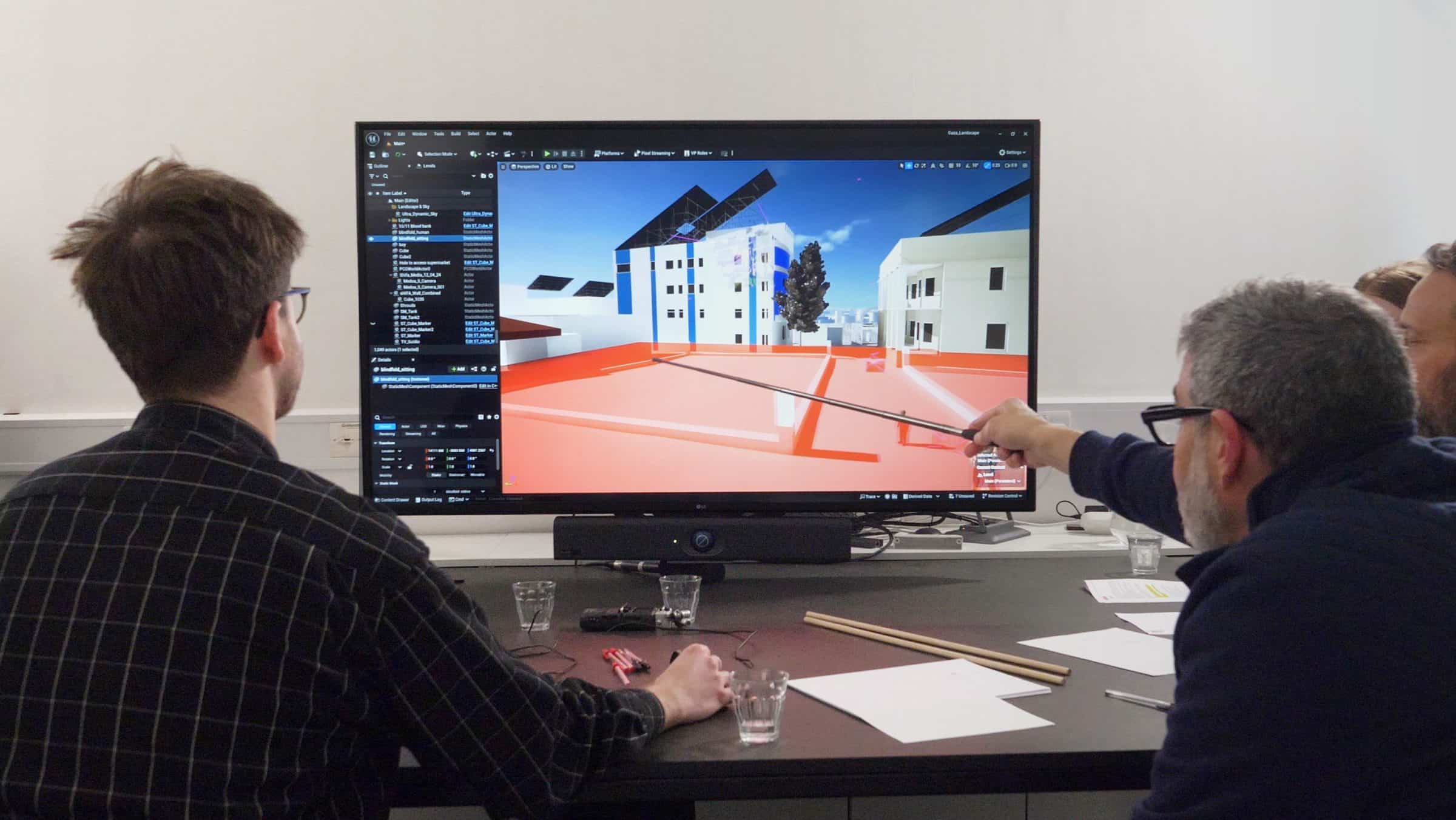
Al-Ahli Hospital has been in operation since 1882. It was established as an outpost of the Anglican Communion’s Church Missionary Society following the Anglo-Egyptian War, in what was then the territory of the Ottoman Empire. When Gaza was occupied by the British during the First World War, al-Ahli was known as ‘the English Hospital’.
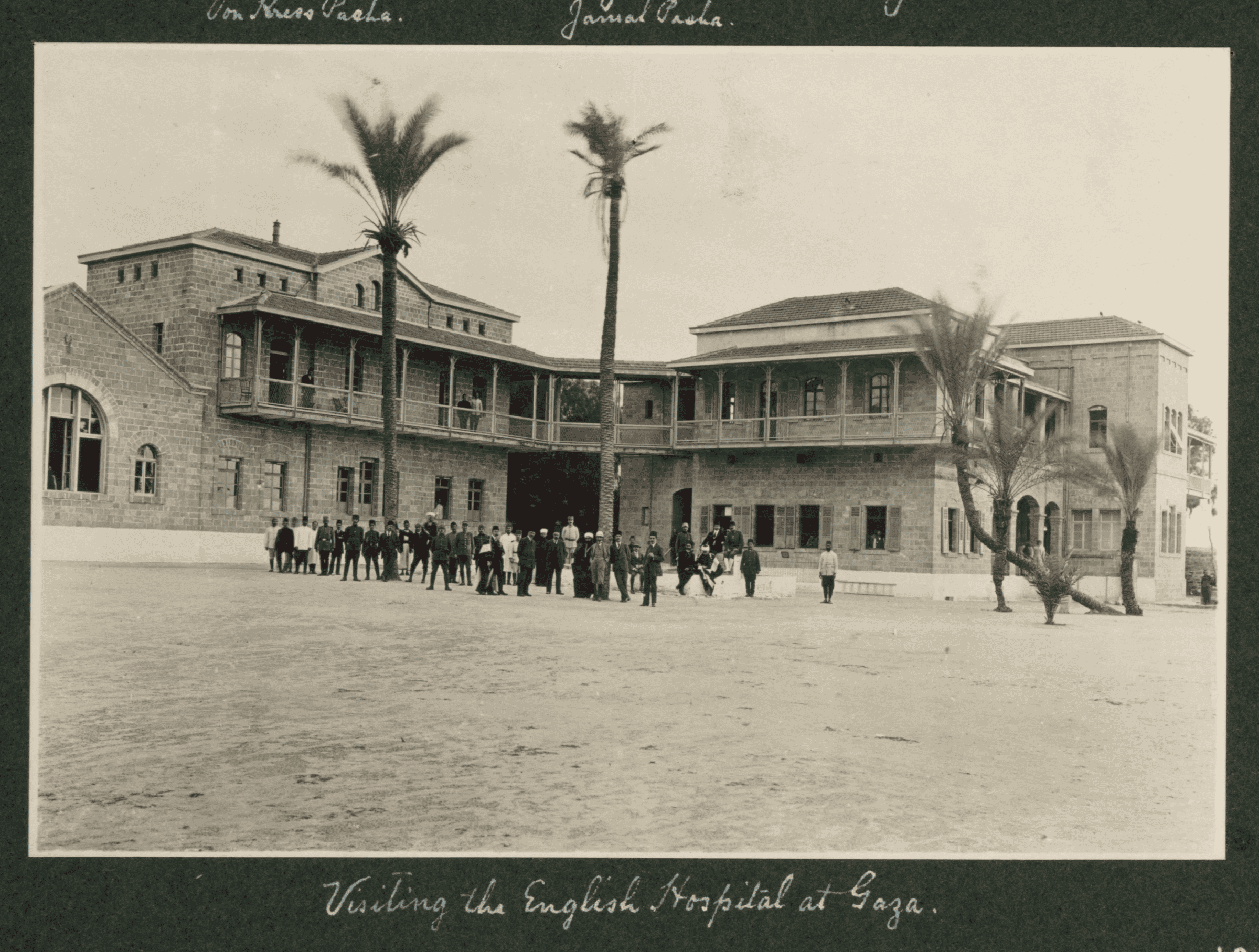
The Blast
During his time at al-Ahli in October 2023, Dr Abu-Sittah saw the hospital’s central courtyard transform into a place of refuge for civilians who had fled their homes during the early weeks of the Israeli air assault on northern Gaza.
At 6:59pm on 17 October, an explosion rocked the hospital’s courtyard, igniting parked vehicles, and reportedly killing hundreds of people camped on the surrounding lawns. At the time of the explosion, Dr Abu-Sittah was operating inside the hospital. Emerging from the building, he witnessed firsthand the resulting devastation.
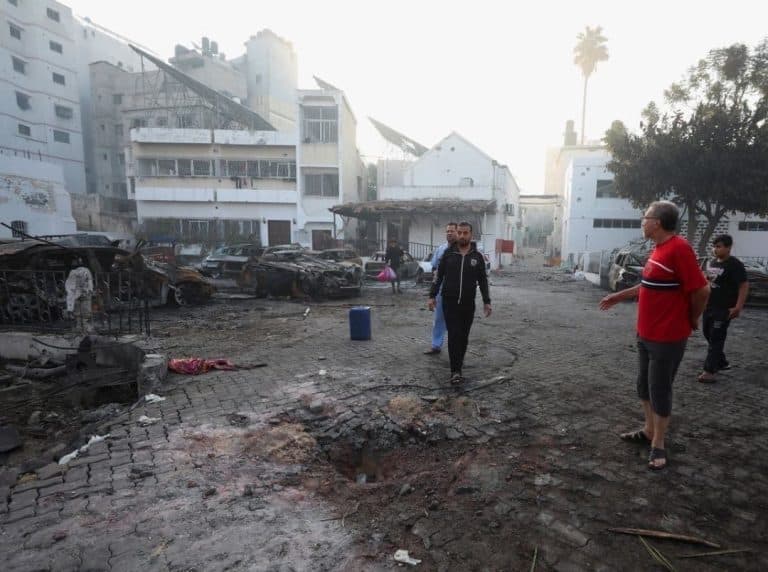
Dr Abu-Sittah was among the first to record video of the scene immediately following the blast. We geolocated that material, as well as other video clips captured by journalists from Anadolu and Al Jazeera, and placed them within a digital, 3D model of the hospital and its immediate surroundings.
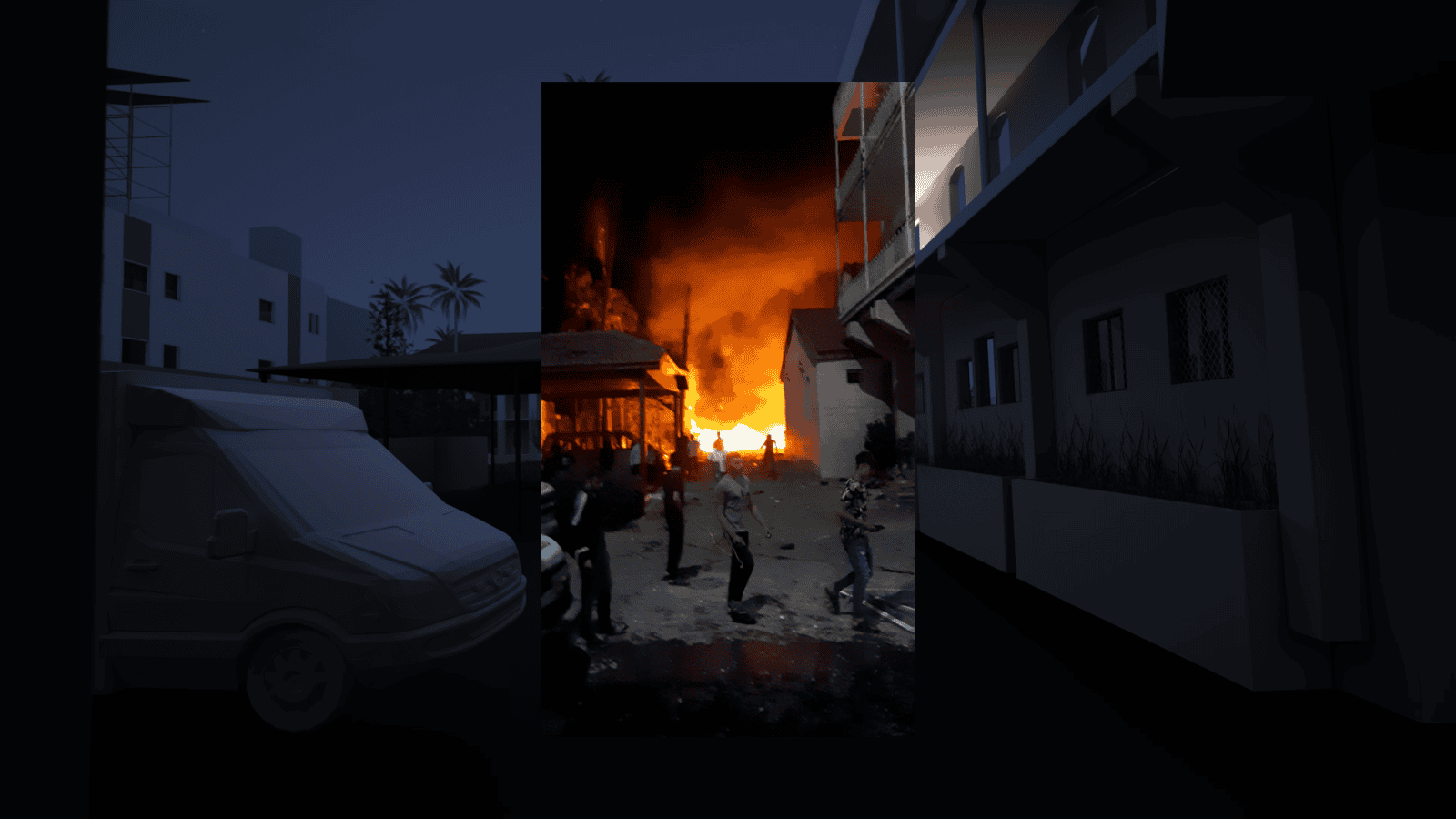
The Source of the Blast
The source of the blast was immediately a point of contestation. Israeli officials suggested that a failed rocket launch by Hamas or Palestinian Islamic Jihad (PIJ) was responsible for the explosion, while Palestinian authorities blamed an Israeli airstrike.
Israeli military officials published false information soon after the blast, incorrectly identifying a video of a rocket being intercepted outside Gaza by their own missile defence system, far from the hospital, as a munition fired by Palestinian militants, which they claimed had disintegrated over the hospital, causing the blast. Since we (among others) debunked this claim, Israel has still not provided any conclusive evidence to support its claim that the deadly blast at al-Ahli Hospital was caused by a rocket fired by Hamas or PIJ.
Four days before the explosion, on 13 October, Israel had ordered the evacuation of all hospitals in northern Gaza, including al-Ahli. The following day, an artillery strike on the hospital’s cancer treatment ward was understood by staff to be a warning. Our wider research has identified a four-phase process by which hospitals in Gaza have been forced out of service by the Israeli military since October 2023, which commonly involves ‘intimidation’ or ‘warning’ strikes on areas immediately surrounding hospitals.
Based on videos and photographs recorded in the aftermath of the attack, we constructed a digital model of the hospital, and conducted a spatial analysis of features of the blast, including the crater and impact marks.
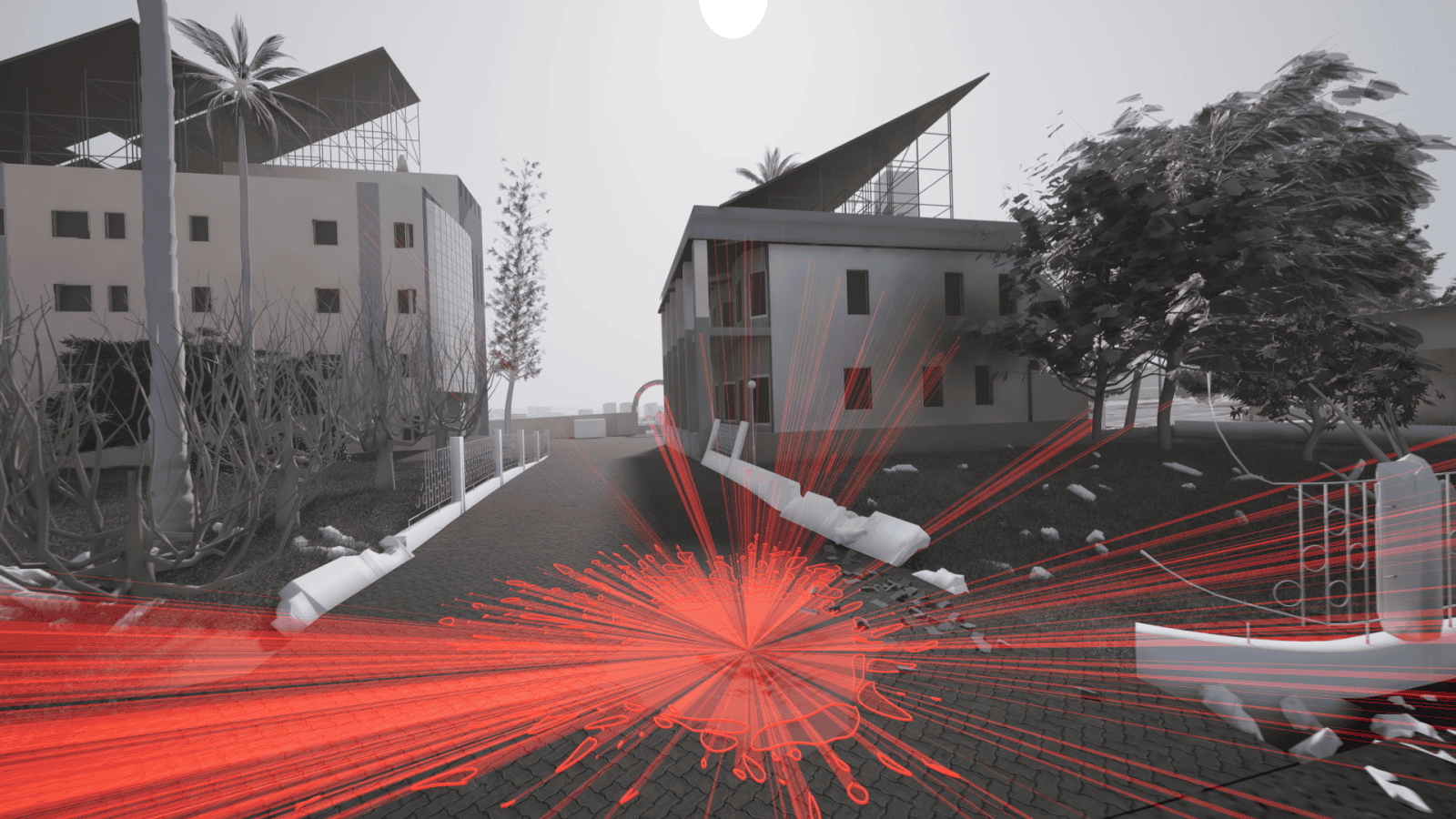
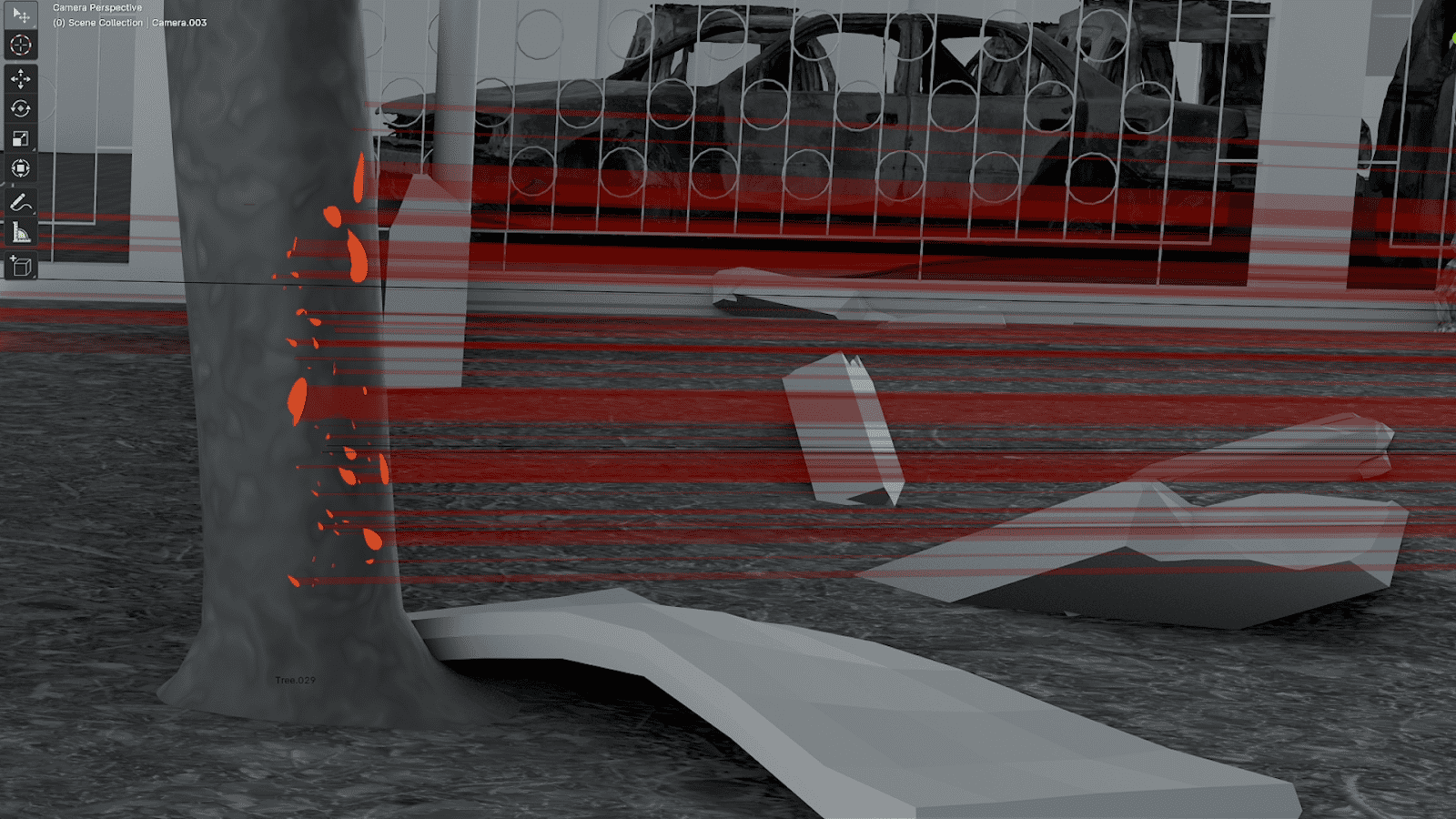
Medical Testimony
Much of the analysis of the deadly explosion at al-Ahli Hospital has been conducted from afar. By contrast, Dr Abu-Sittah’s testimony offers a ground-level view, of the death and destruction he witnessed firsthand from inside the hospital compound.
Since the start of Israel’s assault on Gaza, medical workers have offered a threefold perspective on attacks on the region’s medical infrastructure. As survivors, they are direct ear- and eyewitnesses to attacks. They are expert witnesses, able to interpret physical injuries, understanding the types of weapons that can inflict them. But in Gaza since October 2023, as hospitals have functioned as shelters and nodes of connection for a shattered civil society, medical professionals have also become secondary witnesses, passing on testimonies shared with them by civilians from surrounding neighbourhoods about conditions across the besieged Strip. Dr Abu-Sittah’s situated testimony of the blast at al-Ahli entails each of these three modes of witnessing.
Concerning the nature of the wounds he treated at al-Ahli that night, Dr Abu-Sittah recalled: ‘The wounds were clean. They didn’t have dust and dirt and gravel, and they were just sharp cuts. Amputations.’ In Dr Abu-Sittah’s assessment, this suggested to him that the rocket was likely to have been a ‘fragmentation bomb’.
‘You can tell the difference between an IED and a missile looking at the wound. You can tell the difference between a fragmentation bomb and a regular bomb looking at the wound’. – Dr Ghassan Abu-Sittah
Following the blast, many news outlets cited Israeli military spokesperson Daniel Hagari’s claim that it was caused by a Palestinian rocket that failed to burn its propellant. However, our analysis suggests that the rockets identified by the Israeli army would have burned through their propellant while still far from the hospital. Dr Abu-Sittah also told us that most injuries he saw following the blast were not caused by burns, but rather by munition fragments.
The explosion at al-Ahli Hospital was the first time since the start of Israel’s military assault on Gaza that such a scene of devastation at a medical facility was broadcast around the world – though it would not be the last. On the night of the attack, Dr Abu-Sittah told the media: ‘what happened today was a war crime’, before predicting: ‘more hospitals will be targeted’.
And indeed, the following year saw extensive Israeli attacks on Gaza’s healthcare system, creating what the World Health Organization has called a ‘public health catastrophe’.
Our research shows that all but one of Gaza’s 36 hospitals have been put out of service at some time since October 2023 as a result of Israeli military operations; 31 of those 36 have been directly attacked by the Israeli military; 11 have been subjected to a siege by Israel’s ground forces, and 10 have been invaded and occupied by those same forces. The UN’s independent inquiry on the Occupied Palestinian Territories has called this ‘a concerted policy to destroy Gaza’s healthcare system’, constituting ‘war crimes and the crime against humanity of extermination’.